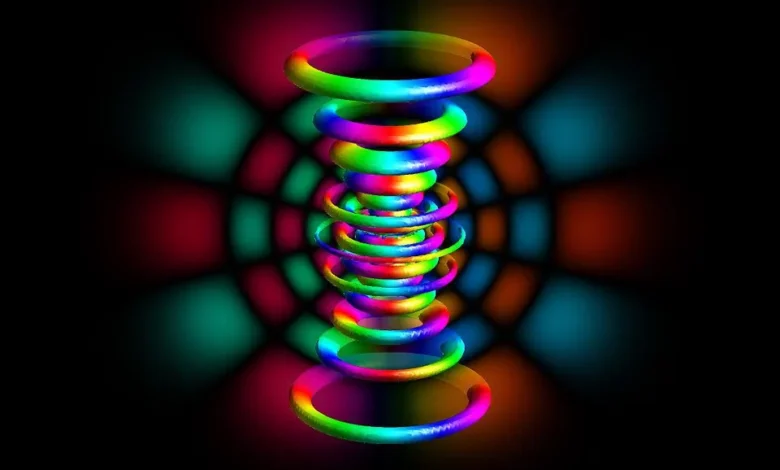
10 Ideas for Exploring the Concept of Quantum Mechanics? Quantum mechanics is a fundamental theory in physics that describes the behavior of matter and energy at the atomic and subatomic levels. It is a fascinating subject that challenges our conventional understanding of the world and has numerous applications in modern technology.
1. Understanding the Basics of Quantum Mechanics
Quantum mechanics is a fundamental branch of physics that deals with the behavior of matter and energy at the atomic and subatomic level. It is based on the principles of quantum theory, which suggests that particles such as atoms and subatomic particles can exist in multiple states simultaneously, a concept known as superposition. Another fascinating concept in quantum mechanics is quantum entanglement, which refers to the phenomenon where particles become intertwined in a way that the state of one particle is correlated with the state of the other particle, regardless of the distance between them. The principles of quantum mechanics have led to the development of numerous technologies, including quantum cryptography, quantum computing, and quantum sensors.
2. Wave-Particle Duality

Wave-particle duality is a fundamental concept in quantum mechanics that suggests that particles can exhibit both wave-like and particle-like behavior. This means that particles such as electrons and photons can behave like waves under certain conditions and like particles under other conditions. This concept was first proposed by Louis de Broglie in 1924, who suggested that if light can exhibit both wave-like and particle-like behavior, then perhaps matter can too. This concept was later confirmed by experiments, including the famous double-slit experiment, which showed that electrons can exhibit wave-like interference patterns when passed through a double-slit apparatus. The wave-particle duality concept has profound implications for our understanding of the nature of matter and energy, and it plays a crucial role in the development of quantum mechanics.
3. Uncertainty Principle
The uncertainty principle is a fundamental concept in quantum mechanics that states that it is impossible to know certain properties of a particle, such as its position and momentum, with absolute precision. This principle was first introduced by Werner Heisenberg in 1927, who suggested that the act of measuring the position of a particle would inevitably disturb its momentum, and vice versa. This means that the more precisely we measure one property, the less precisely we can know the other. This principle has far-reaching implications for our understanding of the behavior of particles at the atomic and subatomic level, and it has played a critical role in the development of quantum mechanics. The uncertainty principle has led to the development of numerous technologies, including scanning tunneling microscopes, which allow scientists to see individual atoms and molecules with incredible precision, and has had significant implications for the field of quantum cryptography.
4. Quantum States
Quantum states are a fundamental concept in quantum mechanics that describe the possible states of a particle, such as its position, momentum, and spin. These states are described by mathematical equations known as wave functions, which provide a probabilistic description of the particle’s behavior. The wave function gives the probability that the particle will be found in a particular state when measured. The concept of quantum states is based on the principle of superposition, which suggests that particles can exist in multiple states simultaneously until they are measured, at which point they collapse into a single state. The behavior of quantum states has far-reaching implications for our understanding of the behavior of matter and energy at the atomic and subatomic level, and it has led to the development of numerous technologies, including quantum computing, which uses the properties of quantum states to perform calculations much faster than classical computers.
5. Quantum Entanglement and Superposition

Quantum entanglement and superposition are two fundamental concepts in quantum mechanics that are closely related. Superposition refers to the idea that particles can exist in multiple states simultaneously until they are measured, at which point they collapse into a single state. Entanglement, on the other hand, refers to the phenomenon where particles become intertwined in a way that the state of one particle is correlated with the state of the other particle, regardless of the distance between them. This means that if one particle is in a state of superposition, then the other particle is also in a state of superposition, and if the state of one particle changes, the state of the other particle changes instantaneously, regardless of the distance between them.
The concept of quantum entanglement and superposition has far-reaching implications for our understanding of the nature of matter and energy. It has led to the development of numerous technologies, including quantum cryptography, which uses the principles of entanglement to create secure communication networks. It has also led to the development of quantum computing, which uses the principles of superposition and entanglement to perform calculations much faster than classical computers. However, the behavior of quantum entanglement and superposition is still not fully understood, and it continues to be the subject of ongoing research in the field of quantum mechanics.
6. Quantum Entanglement
Quantum entanglement is a phenomenon in quantum mechanics where particles become intrinsically linked in such a way that the state of one particle is correlated with the state of the other particle, regardless of the distance between them. This means that if two particles become entangled, their states are no longer independent of each other, and any changes made to one particle will instantaneously affect the other particle, no matter how far apart they are. This concept was first proposed by Albert Einstein, Boris Podolsky, and Nathan Rosen in 1935, in their famous EPR (Einstein-Podolsky-Rosen) paper.
The phenomenon of quantum entanglement is often described as “spooky action at a distance,” and it has far-reaching implications for our understanding of the nature of reality. Entangled particles have been shown to violate classical concepts such as locality and causality, and they have led to the development of numerous technologies, including quantum cryptography and quantum teleportation.
Entanglement occurs when two or more particles are created or interact in such a way that their states become dependent on each other. For example, a pair of entangled photons can be created by a process called spontaneous parametric down-conversion, which involves shining a laser through a nonlinear crystal. When the laser light passes through the crystal, it can split into two photons that are entangled with each other. The entangled photons can then be separated by great distances, and their states will remain linked.
The concept of quantum entanglement is still not fully understood, and it continues to be the subject of ongoing research in the field of quantum mechanics. However, the phenomenon has already led to significant technological advancements, and it has the potential to revolutionize fields such as computing, communication, and cryptography.
7. Superposition
Superposition is a fundamental concept in quantum mechanics that refers to the ability of particles to exist in multiple states simultaneously until they are measured, at which point they collapse into a single state. This means that a particle can exist in multiple positions, energy levels, or other properties at the same time, and the probability of finding the particle in any one of those states is determined by the wave function. The wave function describes the probabilities of different outcomes when a particle is measured, and it is a complex mathematical function that reflects the uncertainty of quantum mechanics.
The concept of superposition has far-reaching implications for our understanding of the behavior of matter and energy at the atomic and subatomic level. It has led to the development of numerous technologies, including quantum computing, which uses the properties of superposition to perform calculations much faster than classical computers. However, the behavior of superposition is still not fully understood, and it continues to be the subject of ongoing research in the field of quantum mechanics.
One of the most famous examples of superposition is the Schrödinger’s cat thought experiment, which illustrates the paradoxical nature of quantum mechanics. In this experiment, a cat is placed in a box with a radioactive substance that may or may not decay, releasing a poison that would kill the cat. According to the laws of quantum mechanics, until the box is opened and the state of the radioactive substance is measured, the cat is both alive and dead at the same time, existing in a superposition of states. It is only when the box is opened and the state of the radioactive substance is measured that the cat’s state collapses into a single state of either alive or dead. This thought experiment highlights the strange and counterintuitive nature of quantum mechanics and the concept of superposition.
8. Schrödinger’s Cat Thought Experiment
Schrödinger’s cat is a famous thought experiment that explores the paradoxical nature of quantum mechanics. In this section, we will delve into the experiment and its implications.
The Experiment
Schrödinger’s cat thought experiment involves placing a cat in a sealed box with a vial of poison that will be released if a radioactive atom decays. According to quantum mechanics, until the box is opened, the cat is both alive and dead at the same time.
Implications
Schrödinger’s cat experiment highlights the paradoxical nature of quantum mechanics, where particles can exist in multiple states at once, and observation can collapse their probabilities.
Quantum Tunneling
Quantum tunneling is another intriguing concept in quantum mechanics, which describes the phenomenon of a particle passing through a barrier that it should not be able to cross. In this section, we will explore this idea in more detail.
The Principle
Quantum tunneling occurs when a particle can cross a potential energy barrier without having enough energy to surmount it.
Applications
Quantum tunneling has numerous applications in various fields, such as tunnel diodes in electronics, nuclear fusion in stars, and radioactive decay.
Quantum Cryptography
Quantum cryptography is an emerging field that utilizes the principles of quantum mechanics to develop secure communication protocols. In this section, we will explore the key concepts of quantum cryptography.
Key Distribution
Quantum cryptography uses the properties of quantum mechanics to distribute cryptographic keys securely between two parties. This is done by sending photons in a particular state, which will change if they are intercepted or observed.
Unconditional Security
Unlike traditional cryptographic protocols, which rely on mathematical complexity and assumptions, quantum cryptography provides unconditional security, making it impossible to intercept or decipher the key without detection.
Quantum Computing
Quantum computing is another field that has gained a lot of attention in recent years, with the promise of revolutionizing computing and solving problems that are currently impossible to solve with classical computers. In this section, we will explore the principles of quantum computing.
Quantum Bits
Quantum computing utilizes quantum bits, or qubits, which can exist in multiple states simultaneously, allowing for the processing of massive amounts of data.
Quantum Algorithms
Quantum algorithms are specifically designed to take advantage of the unique properties of qubits, allowing for the solution of problems that would take classical computers millions of years to solve.
Read More: 10 Ideas FBI Program tasked Infrastructure Security In 2023
9. The Role of Observation in Quantum Mechanics
The role of observation in quantum mechanics has been a subject of debate and intrigue for decades. In this section, we will explore the implications of observation in quantum mechanics.
The Measurement Problem
The measurement problem in quantum mechanics refers to the fact that the act of measuring a particle’s state collapses its probability into a definite state.
Interpretations
There are several interpretations of the measurement problem, such as the Copenhagen interpretation, which suggests that observation is essential to the collapse of the wave function, and the many-worlds interpretation, which suggests that all possible outcomes exist simultaneously.
10. The Many-Worlds Interpretation
The many-worlds interpretation is a fascinating concept that suggests that all possible outcomes of an event exist simultaneously in separate universes. In this section, we will explore this interpretation in detail.
The Principle
According to the many-worlds interpretation, every possible outcome of a quantum event occurs in a separate universe, with each universe branching off into new possibilities.
Implications
The many-worlds interpretation challenges our conventional understanding of reality, suggesting that there are countless versions of ourselves and the world, each existing in a separate universe.
The Future of Quantum Mechanics
The future of quantum mechanics is bright, with numerous applications in technology and science. In this section, we will explore some of the potential applications of quantum mechanics.
Quantum Sensors
Quantum sensors can detect changes in the environment with unparalleled precision, allowing for the development of new technologies in fields such as medicine, environmental monitoring, and national security.
Quantum Communication
Quantum communication provides an entirely secure way to transmit information, making it ideal for applications such as banking and national security.
Conclusion
Quantum mechanics is a fascinating subject that challenges our conventional understanding of the world. In this article, we explored ten ideas for exploring the intricacies of quantum mechanics, including quantum entanglement, superposition, Schrödinger’s cat thought experiment, quantum tunneling, quantum cryptography, quantum computing, the role of observation, the many-worlds interpretation, and the future of quantum mechanics. With numerous potential applications in technology and science, quantum mechanics will continue to play a vital role in shaping our understanding of the universe.












4 Comments